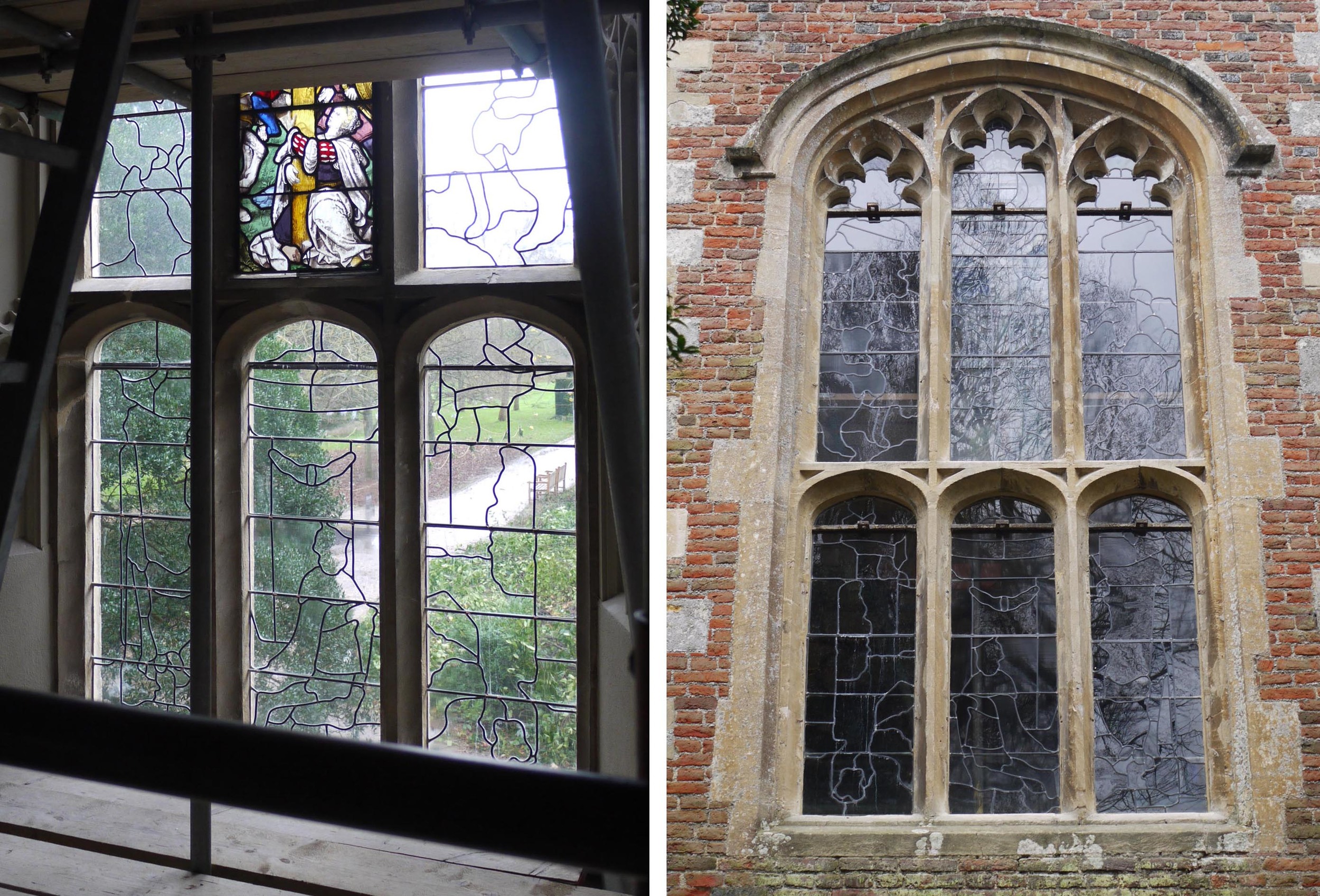All Saints, Shrewsbury Holy Cross, Ramsbury, Wiltshire
On the last four trips to look at stained glass windows, I've found myself looking at the same shaped rose in the centre of a design. These all have at leat one ring of five petals with a symmetrically folded edge and a spotty centre. They range from the most realistic at All Saints Shrewsbury (above left) to the most modern and heraldic one from the 1950s at Eltham Palace (below right). The effect of three of them is rather ruined by one or two bars running right through the centre, but I like the combination of this basic 3D modelling surrounded by geometric patterns - as ever I'm focusing on the look of the design rather than its meaning.
Moravian Church, Malmesbury Great Hall, Eltham Palace
The Vyne, Hampshire St. Mary, South Hayling St. Mary, Cheltenham
Unsurprisingly, I found more examples of the same in my files of recent stained glass photographs including the two above - the most lovely red on blue rose in a tudor window at The Vyne (NT, near Basingstoke) and one at the bottom of a Kempe window on Hayling Island. As this slightly blurry image shows, I wasn't concentrating on the bottom, or predella, of a window at this point even though this is where you can get an excellent close up shot.
It's great to see more realistic roses too, like the ones in the triangular tracery from St. Mary, Cheltenham (above right). My all time favourites are in St. Johannes, also known as The Church of the Roses, built in Malmo in 1906. The rose is everywhere inside and is the subject matter of most of the windows, including a number of rose "rose" windows. Since my first visit to this church in 2012 I have been very influenced by its colour scheme in my work for interiors. The combination of every hue but in a pastel tone gives you a really peaceful, happy feeling.
St. Johannes, Malmo








